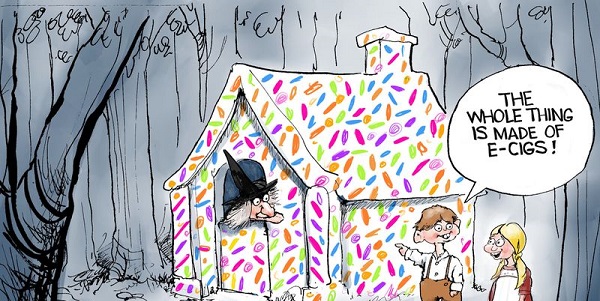Tobacco Industry in India

From Current Affairs Notes for UPSC » Editorials & In-depths » This topic
IAS EXPRESS Vs UPSC Prelims 2024: 85+ questions reflected
Background:
- Tobacco products kill over 13 lakh people in India every year.
- Tobacco use imposes an economic burden of ₹177,340 crore– which is over 1% of India’s GDP.
- Tobacco use isn’t confined to the adult population in India. These are being used even by school-children. Tobacco is being used in some form by:
- 27 crore people (>15 years old)
- 8.5% of children in 13-15 years age group
How can taxation help reduce demand?
- The use of pricing measures and taxation is known to be one of the most cost-effective ways of reducing demand for tobacco products.
- When such products are made more expensive, people tend to reduce their use or quit using them altogether. Higher prices also serve as a disincentive to habit creation.
What is the tobacco industry’s argument on this?
- However, the use of taxation hurts the revenue and profits of the tobacco industry. Hence, the industry players are always coming up with narratives and tactics to pre-empt tax hikes on tobacco products.
- The tobacco industry has been highlighting the ‘increasing illicit trade’ in tobacco products to discourage any tax hikes on tobacco. This narrative isn’t exclusive to India and is being used by the tobacco industry in most of the countries.
- In India, the industry (led by ITC Ltd.) maintains that illegal cigarette trade accounts for 25% of India’s cigarette market.
- According to a report, from the Tobacco Institute of India (a representative body of the industry), the volume of illegal cigarettes in India has increased by 44% between 2011 and 2019. It also added that the hike in tax rates encourages illegal trade and provides an opportunity for tax evasion.
How true are these claims?
- These estimates provided by the industries and the methods used to determine them aren’t backed by transparent studies.
- A different picture is presented by studies published in peer-reviewed journals.
- A 2018 study surveyed empty cigarette packs collected from retail outlets in different Indian cities. It estimates that illicit cigarette accounts for only 2.7% of the market.
- Another 2020 study made use of tax-gap analysis to estimate that illicit cigarettes constitute 5.1% of the market in 2009-10 and 6.6% of the market in 2016-17.
- These studies’ estimates of the illicit cigarette market are nowhere near the industry’s figure of 25%. Hence, it can be perceived as an attempt to influence public debate on tobacco taxation.
- The GST revenue collection from tobacco has seen a 3% real decline in the last 2 financial years.
- Annual reports from the ITC Ltd. show that profits (after tax), in real terms, have increased 3% per year for the past decade. It is to be noted that despite ITC’s business diversification move, about 85% of its profits are still coming from its cigarette business.
- At the same time, the economic burden from tobacco use has increased by 22% in real terms between 2011 and 2017.
- In contrast to what the industry has been claiming, tax hikes have only a minimal impact on illicit trade. In several countries, illicit trade is low despite the high tax rates imposed on tobacco products. In other countries, there is a high prevalence of illicit trade despite the low tax rates.
- This shows that there are several determining factors when it comes to the prevalence of illicit trade in a country:
- Tax administration quality
- Strength of regulatory framework
- Government’s commitment to controlling illicit trade
- Strength of governance
- Social acceptance
- Informal distribution networks, etc.
What is the way ahead?
- India has a relatively low prevalence of illicit cigarette market compared to the world average of 11.2% (determined from a study of 36 countries).
- Eliminating illicit tobacco products’ trade is one of the key objectives of the Protocol to Eliminate Illicit Trade in Tobacco Products under the WHO’s Framework Convention on Tobacco Control.
- This protocol gives tools and measures to minimize (or eliminate) such trade. Some of these are:
- Strong governance
- International track and trace system
- Securing supply chains
- India has already ratified the protocol and what remains to be done is showing leadership in implementing the measures to reduce the illicit trade to even lower levels.
- India hasn’t increased the tax on any of the tobacco products significantly since the introduction of the GST system in 2017. This has made tobacco products more affordable. There isn’t any rationale- scientific or public health-wise- behind the narrative that tobacco taxation encourages illicit trade.
Conclusion:
Tobacco use is detrimental to public health. It is essential to find ways to reduce the demand for tobacco products among existing users and aspiring users. Taxation is one of the cost-effective solutions that India can adopt now.
Referred Sources
If you like this post, please share your feedback in the comments section below so that we will upload more posts like this.

